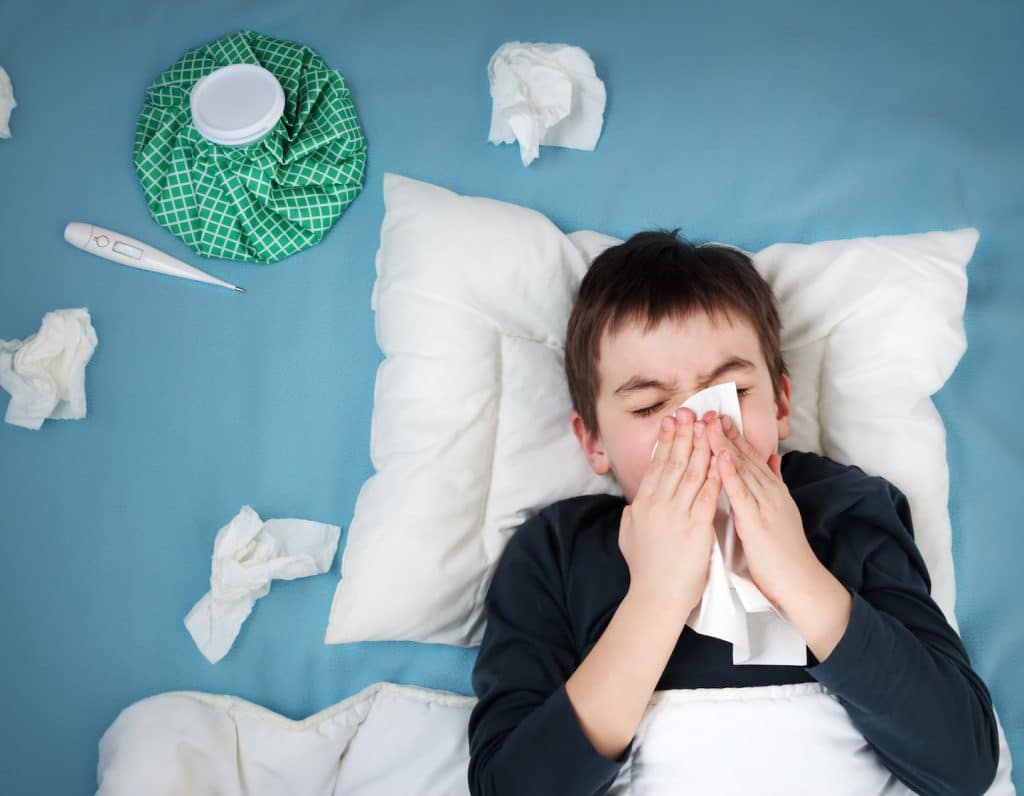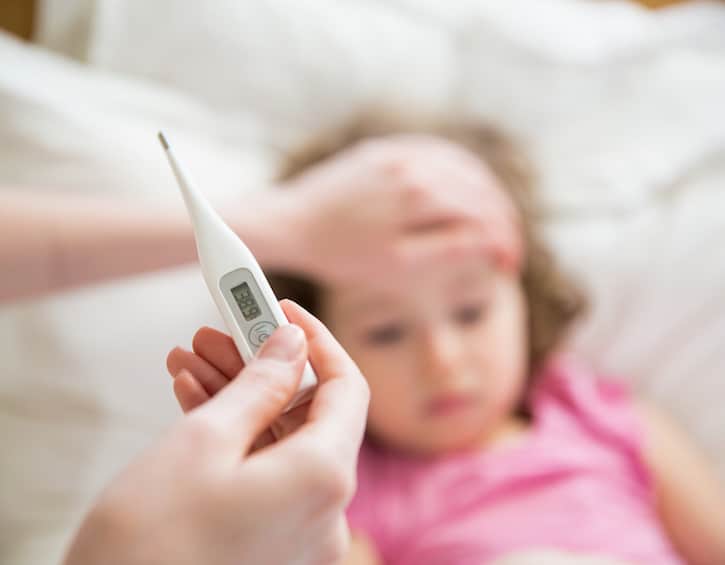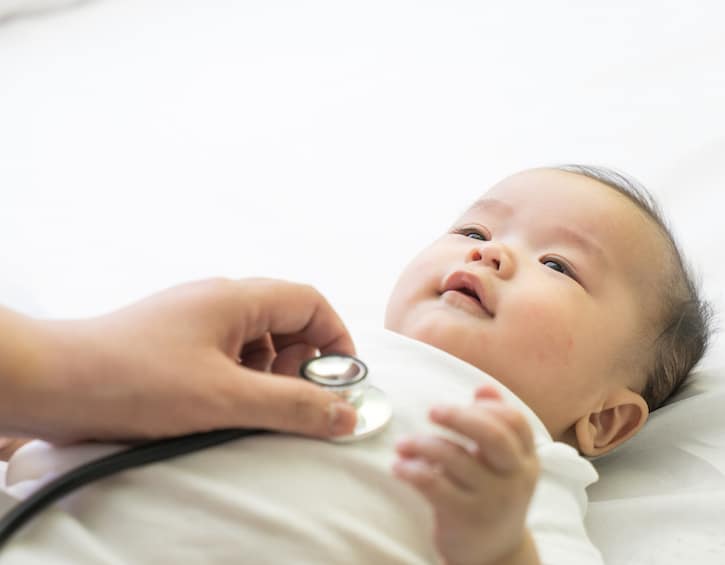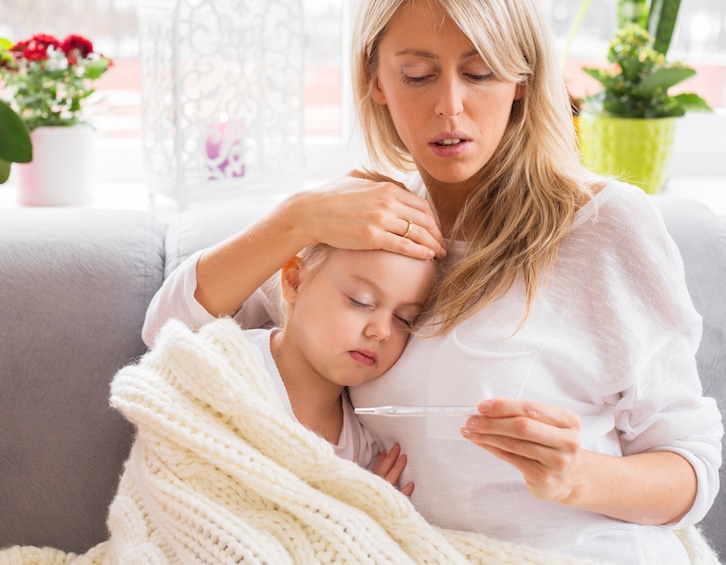
 Post Category - WellnessWellness - Post Category - HealthHealth
Post Category - WellnessWellness - Post Category - HealthHealthIt can be terrifying when your baby or child comes down with a fever, but the good news is in many cases you can ride it out at home.
Please welcome Dr. Claudia Chew from Complete Healthcare International (CHI) with everything parents could want to know about fevers in babies and children: including causes, symptoms, when you’re ok to ride it out at home and when it’s time to call the doctor.
As parents, we’ve all been there at some point: entering your child’s room to find him crying and distressed, shivering but sweaty with what feels like a burning forehead. With your heart in your mouth, you take his temperature, and the thermometer lets out an ominous beep. Not another fever again! Should you continue to monitor his temperature, give him some meds or rush him to the doctor’s office immediately?
Fever is one of the most common reasons for children presenting to healthcare services and can be a source of apprehension for many parents. Although one should not take any chances, the good news is that the vast majority of fevers that all children get at some point are minor and usually resolve spontaneously in a few days with no complications. In Singapore, a normal healthy child can still get several viral infections a year no matter how careful you are – up to 7-10 times on average if he/she attends nursery or kindergarten – which also means you’ll likely have to deal with that many fevers. The challenge is for you to know when to be concerned.

What is a fever?
Fever is not a disease, but a symptom of what is most often an underlying infection. In fact, a fever is actually good news – it’s part of your child’s normal immune response and means that it’s doing its job. A high temperature is triggered by a release of chemicals by the immune system, which makes it difficult for harmful germs to survive.
Normal body temperature varies with age, activity level and time of the day and averages from 36.5–37.5°C (97.7F– 99.5F). A fever is defined as:
- Oral (under the tongue) temperature >37.5°C (99.5F)
- Axillary (armpit) temperature >37.3°C (99.1F)
- Ear temperature (can be inaccurate if incorrectly placed or if earwax is present) >37.8°C (100F)
- Rectal temperature (most accurate but inconvenient to obtain) >38°C (100.4F)
How high your child’s temperature is does not correspond to the severity of the underlying illness. Fever also does not cause brain damage – healthy children usually can tolerate a fever of up to 41°C (106F), beyond which there might be complications – but chances are that your child’s temperature will never come close to this threshold because of the brain’s self- regulatory thermostat.
Common causes of fever
- Respiratory tract infections, colds and the flu
- Ear infections
- Urinary tract infections
- Gut infections such as gastroenteritis or gastric flu
- Childhood viral illnesses such as chickenpox, hand, foot and mouth disease (extremely common in Singapore!) or roseola
- Post-vaccination
- Teething
When to keep your cool
Most young children will still appear well, even with a high fever. In general, this means that when assessing your child, you should not focus on what the thermometer says but rather how your child looks and how he is acting. For instance, if it’s a constant hide-and-seek affair to give him medicine and he is still hydrating himself normally, it’s likely a minor viral infection that can easily be handled at home, although he might be eating less and appearing more tired than usual. Fevers lasting less than 3 days and low-grade fevers post-vaccination are also unlikely anything to worry about.

When you should see your doctor
So, when should you actually start worrying about your little one’s fever? See your doctor early if your child:
- Is between 3-6 months of age and has a temperature of 39°C (102.2F) or above
- Has accompanying symptoms such as a sore throat, earache, vomiting or diarrhoea
- Develops a rash, particularly if it does not disappear when you press a glass on it (the ‘tumbler test’)
- Shows signs of dehydration, for example drinking and urinating much less than usual (As a guide, babies should be wetting at least 4 diapers a day and older children should be urinating every 8-12 hours)
- Experiences pain or burning with urination, or foul-smelling urine
- Has a fever lasting longer than 3 days
- Has a condition or is taking a medication that makes it harder for them to fight an infection
- Has been abroad recently
Call an ambulance (995) or go to the emergency room immediately if your child:
- Is aged less than 3 months
- Develops a purplish rash and/or neck stiffness
- Has pale, blotchy, blue or grey skin
- Shows signs of being severely ill – e.g. in pain, has difficulty breathing, is unusually limp or weak
- Is not acting him/herself – e.g. increased irritability, confusion, inconsolability or drowsiness
- Has a seizure (fit), especially if he/she has never had one before
- Has a previous history of serious infections
The above lists are not exhaustive. If you have any doubts about your child’s condition or if there seems to be something else that doesn’t seem right to you, you should always seek medical advice as soon as possible. Trust your parental instincts — you know your child better than anyone!

Dealing with a fever at home
If your child appears well and his fever can be monitored at home, there are many things you can do to control your child’s temperature, reduce his discomfort and potentially prevent further complications such as dehydration:
- Until he/she feels better, monitor your child’s temperature regularly: every 4-6 hours during the day, at bedtime and on awakening in the morning – more frequently if the fever is high
- You can give fever medications such as paracetamol 4-6 hourly if your child is above 3 months of age. This certainly does not treat the cause of the fever but will ease any associated discomfort, aches and pains. You may also use ibuprofen if the fever is above 38.5°C (101.3F), provided your child is neither allergic to nor has a history of asthma attacks triggered by ibuprofen. You can administer a paracetamol or diclofenac suppository if you are familiar with doing so.
- Dress your child lightly and take excessive layers of clothing off
- Encourage your child to drink plenty of cool fluids regardless of their appetite. Popsicles are fine as well.
- Keep the room cool and ventilated.
- Forehead fever patches can be used. Tepid sponging can also be done (in our tropical climate) if the temperature is >38.5°C (101.3F).
- Keep them at home until they recover; make sure he/she gets plenty of rest and TLC!






 View All
View All





 View All
View All









 View All
View All





